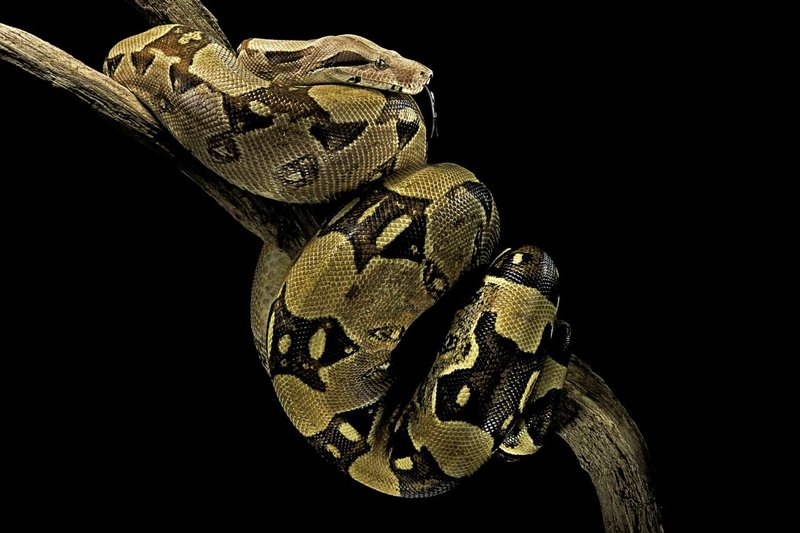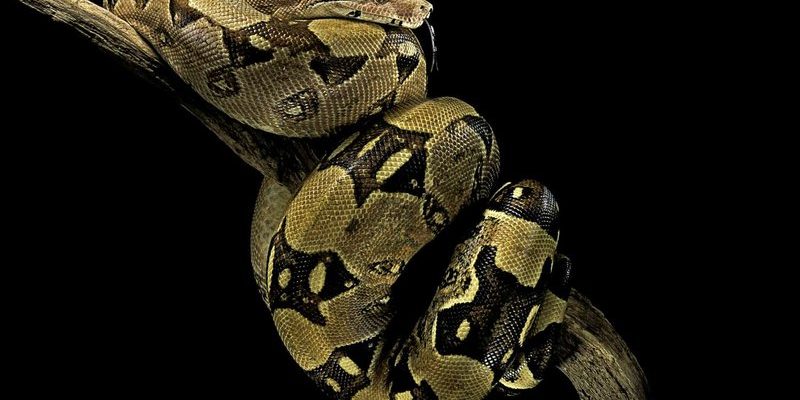
Let’s dive into the world of these incredible reptiles and explore 10 things you likely didn’t know about boa constrictors. From their hunting techniques to their role in the ecosystem, there’s a lot to unpack. So grab your favorite beverage, and let’s get started!
1. They’re Not Just Big Snakes
When you think of boa constrictors, you might picture the giant snakes you often see in movies. Here’s the thing: while they can grow quite large—up to 13 feet in length—they’re not the biggest snakes in the world. That title goes to the anaconda. Boa constrictors are, however, one of the largest snake species you can find, and their size can vary based on their habitat and diet.
Their bulk helps them in various ways. For one, it gives them the power to constrict their prey effectively. But there’s more to their size than just muscles. Their thick bodies also store fat, which allows them to go without food for extended periods—sometimes several weeks—after a large meal. It’s almost like they have a built-in reserve.
2. They Have Unique Color Patterns
You might have noticed the beautiful patterns on a boa constrictor’s skin. These patterns serve more than just aesthetic purposes; they provide excellent camouflage. The typical coloration includes shades of brown, green, and yellow, which help them blend into their natural surroundings, like trees and foliage.
Each boa constrictor has a unique pattern, much like a fingerprint. This uniqueness plays a role in their social interactions as well. For example, males can identify females by their color patterns during mating season. So, if you ever get the chance to observe one up close, take a moment to appreciate the artistry of its skin.
3. They Use Heat Sensing to Hunt
You might be wondering how these snakes manage to find their prey. Boa constrictors have a special ability: they can detect heat. They possess heat-sensing pits located between their eyes and nostrils. This allows them to sense the body heat of their prey, even in the dark.
Imagine being able to “see” temperature changes in the air around you! This skill is especially helpful when hunting warm-blooded animals like rodents or birds. Once they locate their meal, they strike with precision, capturing it with their strong, muscular bodies.
4. They Constrict, Not Squeeze
Now, let’s talk about one of the most interesting aspects of boa constrictors—their method of subduing prey. Contrary to popular belief, boas don’t crush their prey; they actually constrict. Here’s how it works: once a boa constricts around its prey, it tightens its grip every time the prey exhales. This means the poor animal can’t breathe, ultimately leading to asphyxiation.
But here’s the amazing part: boas can sense when their prey has stopped struggling. Once they know it’s safe, they’ll uncoil and swallow it whole. It’s a brutal yet fascinating process that showcases the snake’s incredible hunting adaptations.
5. They Are Excellent Swimmers
You might think of boa constrictors as land-dwelling creatures, but they’re also skilled swimmers. They can easily maneuver through water, thanks to their powerful muscles and streamlined bodies. This ability allows them to hunt aquatic animals and navigate rivers where they often reside.
In fact, many boa constrictors thrive in rainforest ecosystems, which can include rivers and streams. Imagine gliding through the water like a professional swimmer—that’s how boas feel in their element! Plus, this skill adds another layer to their hunting techniques, making them a versatile predator.
6. They Can Change Their Colors Slightly
Here’s a surprising fact: boa constrictors can change their colors slightly to adapt to their surroundings. This isn’t like a chameleon that changes drastically, but they can darken or lighten depending on temperature and environmental factors.
This ability helps them regulate their body temperature, staying warmer in cooler conditions or blending in better with their habitat. It’s a neat little trick that adds to their already impressive survival skills.
7. They Can Live for Over 20 Years
Boa constrictors are long-lived creatures. In captivity, they can live for over 20 years, and some have been known to live even longer! This longevity is partly because they’re at the top of the food chain, with few predators. When kept as pets, their care is relatively straightforward, but they do require proper environments, diets, and regular vet check-ups.
If you’re thinking about getting one as a pet, remember that they’re a long-term commitment. These snakes are fascinating companions, but they grow large and need their space.
8. They’re Solitary Creatures
While many animals thrive in groups, boa constrictors are solitary by nature. They prefer to hunt and live alone, only coming together during mating season. Once they’ve mated, the female will often go on her way, while the male will search for other females.
This independence can make them interesting pets as well, as they typically don’t need social interaction outside of feeding and care from their owners. However, they do appreciate their space—so if you decide to keep one, make sure they have a comfortable, safe environment.
9. They’re Found in Various Habitats
You might be surprised to learn that boa constrictors inhabit a variety of environments. From tropical rainforests to arid deserts, they can adapt to different climates. In fact, they’re commonly found in Central and South America, including locations like the Amazon rainforest.
Their adaptability to various habitats is a testament to their survival skills. In each environment, they play a critical role in the ecosystem, maintaining a balance by controlling the populations of their prey.
10. They Have an Intriguing Reproductive System
Finally, let’s discuss the reproductive side of boa constrictors. Unlike many other snakes, they are ovoviviparous, meaning they give birth to live young rather than laying eggs. The female boa will carry her developing babies inside her body for several months before giving birth to a litter of 20-60 young snakes at a time!
This process is pretty remarkable. It’s almost like she’s nurturing them before they even enter the world, which increases their chances of survival against predators. Once born, the babies are independent and must fend for themselves right away, showcasing the survival instincts they inherit from their mother.
In conclusion, boa constrictors are more than just big, fascinating snakes. They have unique traits, impressive skills, and play an essential role in their ecosystems. Whether you find them in the wild or as a pet, understanding their behaviors and adaptations can enhance your appreciation for these remarkable reptiles. They really are one of nature’s intriguing wonders!

